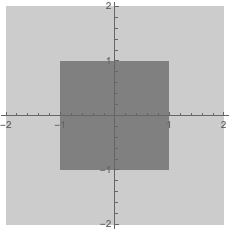I am trying to overlap two Graphics objects g1 and g2 with Show. However, I found that when the coordinates of each object is defined to quite different ranges, I need to "scale" and "shift" the coordinates of one object to get the desired look.
For example,
g1 = Graphics[{GrayLevel[0.8], Rectangle[{-2, -2}, {2, 2}]}];
g2 = Graphics[{{GrayLevel[0.5], Rectangle[{0, 0}, {1, 1}]}}];
Show[g1, AspectRatio -> 1, Axes -> True, ImageSize -> 230]
Show[g2, AspectRatio -> 1, Axes -> True, ImageSize -> 230]
Show[g1, g2, AspectRatio -> 1, Axes -> True, ImageSize -> 230]
The overlapped version of g1 and g2 looks like this

However, I would like to scale the coordinates of g2 to make g2 twice large and also shift its coordinates so the center can "roughly" coincide the center of g1. I say "roughly" because g1 and g2 may be some graphics not of a regular shape. The desired result will look like 
So how can I manipulate the coordinates of g2 to adjust its relative position and size when Show with g1? Please avoid modifying the definition of g1 and g2 as they can be any Graphics copy-pasted over.


